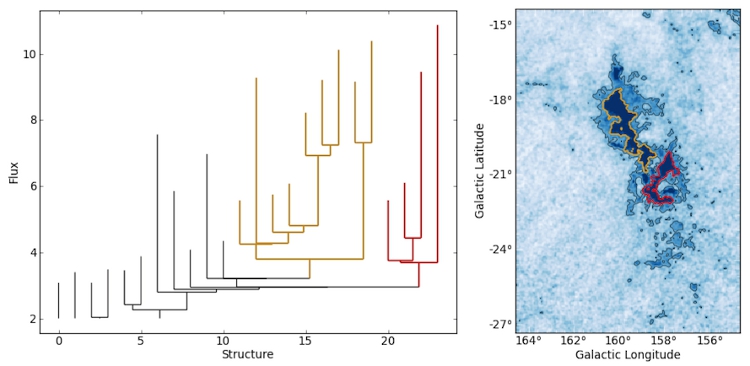| EPoS Contribution |
|
Characterizing the hierarchical structure of molecular clouds with dendrograms
Thomas Robitaille MPIA, Heidelberg, DE | |
| When characterizing molecular clouds in the context of star formation, it is still very common to resort to techniques such as measuring the probability distribution function of the density, or measuring clump or core mass functions. While instructive, these techniques do not make full use of the available data since they ignore the spatial relations existing in the data, and are therefore not sufficient for comparing observations to numerical simulations. Using a hierarchical description of the cloud structure - such as a dendrogram - can overcome these issues by measuring not only the distribution of densities, but by quantifying the spatial relation of the density - such as whether it is highly fragmented, filamentary, or monolithically distributed. In this talk I will introduce a new open source package that can be used to easily characterize 2- or 3- structure in observations or simulations, and will show how this can be used to place better constraints on the agreement between observations and simulations. | |
 | |
| Caption: The above figure shows a very simple dendrogram decomposition (left) of an extinction map of the Perseus star-formation region (right). The structures highlighted in the tree are also shown as contours in the same color in the extinction map. | |
| Collaborators: C. Beaumont, CfA, US A. Goodman, CfA, US E. Rosolowsky, U Alberta, US |
Suggested Session:
Molecular Clouds |

